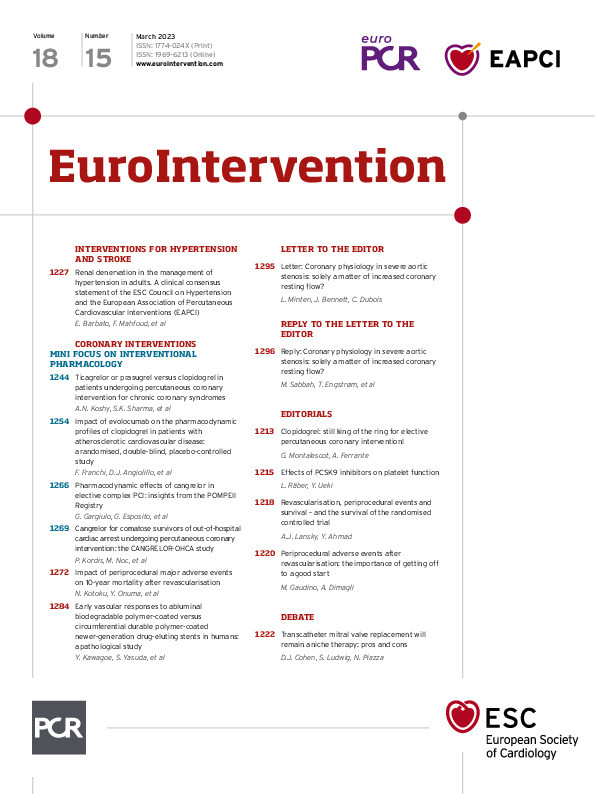PMAE were defined as a composite of numerous periprocedural complications occurring within 30 days from the index procedure. Patients undergoing CABG were more likely to experience one of these events than those undergoing PCI (28.2% vs 11.2%; p<0.001). This difference was mainly driven by the higher incidence of major infections and arrhythmias in the CABG group. It should be noted that this trial enrolled patients between 2005 and 2008, and this difference may not hold true nowadays. For example, our group has recently shown how the incidence of postoperative atrial fibrillation (the most common complication of CABG) can be halved by left posterior pericardiotomy2.
Regardless of the merit of the single procedure (CABG or PCI), PMAE were associated with an increased risk of all-cause mortality at 1 year, but not at 5 and 10 years. This important time-dependency offers the reader two essential messages: first, the need for a tailored, stricter follow-up for patients developing PMAE after an intervention; second, the potential role of optimal medical therapy (OMT). Indeed, the authors found that in patients with PMAE on OMT, there was a lower risk of all-cause mortality compared to patients with PMAE but not on OMT. This is not surprising considering the findings of a meta-analysis of 5 randomised clinical trials that showed that increasing compliance to OMT significantly improved outcomes following CABG and PCI3.
On one hand, the lack of association between PMAE and mortality at 5 and 10 years can be reasonably explained by the fact that the effects of those events are more evident early after their occurrence and then diminish. On the other hand, readers should consider the combination of three factors: a relatively old cohort of patients; long follow-up; and use of non-cause-specific mortality as an outcome. This combination may have biased and actually underestimated the association investigated at long-term follow-up.
Another important message revolves around the definition for the diagnosis of periprocedural myocardial infarction (MI), which has been debated at length in recent years4. In this post hoc analysis, besides the original definition used in the SYNTAX trial, the authors presented further analyses using different definitions and found consistent results across all definitions. This highlights the clinical relevance of post-revascularisation myonecrosis irrespective of the definition used, also considering that, among PMAE, MI was the only event retaining an association with mortality up to 10 years when considered singularly. It is possible that some periprocedural complications are more prone to increase the periprocedural mortality risk but, once resolved, do not influence long-term risks, while others, such as MI, are able to carry a substantial risk throughout the years.
Surprisingly, the authors did not find infections, in particular after CABG, to be associated with a higher risk of mortality at 5 and 10 years. This is in contrast with previous studies and a meta-analysis showing that a sternal wound infection is a risk factor for long-term mortality56. This difference could be related to the smaller CABG sample size in this post hoc analysis.
Another important thought-provoking finding is the miscalibration of the SYNTAX score II. In recent years, there has been an increasingly higher focus on the ability to predict not only short-term outcomes, as is already quite well done by the EuroSCORE and STS score7, but also long-term outcomes. In this regard, the authors showed a notable underestimation of risk by the SYNTAX score II in the cohort of patients experiencing PMAE. This underlines the reasonable assumption that long-term prediction cannot rely exclusively on preprocedural variables but also needs to take into account operative and post-procedural events that can impact patients’ long-term recovery. This assumption is further supported by the finding that patients who experienced more than two PMAE were associated with lower survival up to 10 years.
In conclusion, this is a significant contribution, filling a gap in the evidence and providing cardiologists and surgeons with important information: periprocedural events should trigger a tailored, more aggressive follow-up accompanied by optimisation of medical therapy to guarantee the best outcomes for the patients.
Conflict of interest statement
The authors have no conflicts of interest to declare.

